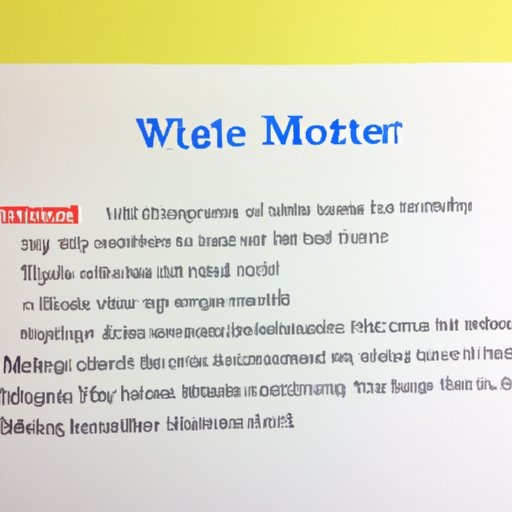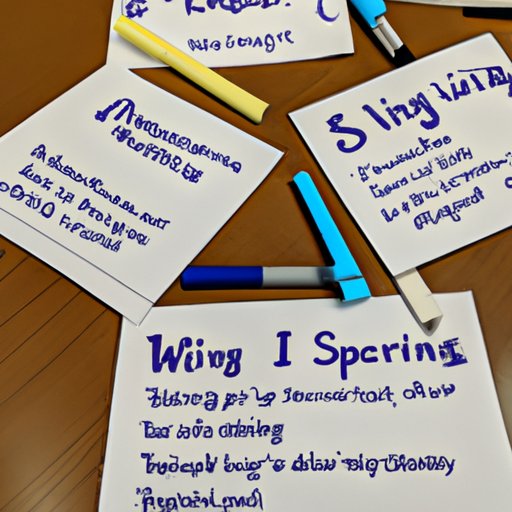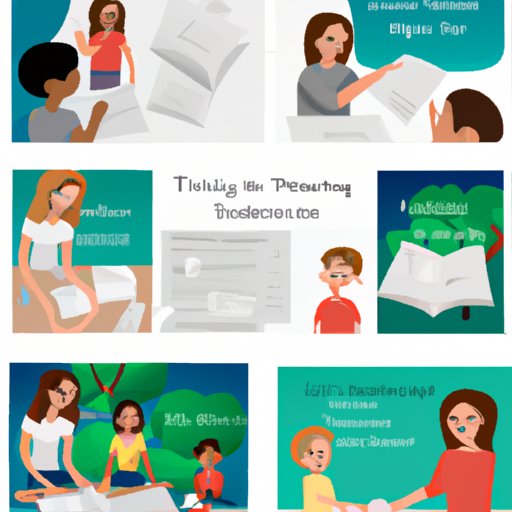Introduction
Teaching elementary students writing can be a daunting task. It requires understanding the developmental level of each student and providing them with the tools they need to become successful writers. The purpose of this article is to provide teachers with tips and strategies to help their students develop their writing skills in an engaging and effective way.
Utilizing Story Starters to Inspire Creativity
Story starters are a great way to get students thinking creatively about writing. By providing students with a sentence or prompt to begin their story, it can help them get their ideas flowing and allow them to focus on developing their story rather than getting stuck on the first sentence. There are many benefits to using story starters, including sparking creativity, encouraging risk-taking, and helping students establish a clear direction for their writing.
Examples of story starters include:
- The day started out normally enough, but then something strange happened…
- If I had one wish, it would be…
- I never expected to find…
- When I stepped into the room, I saw…

Providing Students with Mentor Texts to Model Writing Techniques
Mentor texts are pieces of writing that can be used to model writing techniques for students. They can be used to show students how to use descriptive language, craft an interesting plot, create compelling characters, and more. By reading and analyzing high-quality writing, students can learn how to apply these techniques to their own writing. There are many benefits to using mentor texts, including giving students examples of good writing, helping them develop their own writing style, and inspiring them to take risks with their writing.
Examples of mentor texts include:
- The Catcher in the Rye by J.D. Salinger
- To Kill a Mockingbird by Harper Lee
- The Adventures of Huckleberry Finn by Mark Twain
- The Outsiders by S.E. Hinton

Incorporating Fun and Interactive Activities into Writing Lessons
Incorporating fun and interactive activities into writing lessons can help keep students engaged and motivated to write. These activities can range from playing word games to writing stories collaboratively. By making writing enjoyable, students are more likely to stay focused and put in the effort needed to develop their writing skills. There are many benefits to incorporating fun activities, such as building enthusiasm for writing, increasing engagement, and helping students practice their writing skills.
Examples of fun and interactive activities include:
- Word Scramble – Students unscramble words related to a given topic.
- Mad Libs – Students fill in blanks to complete a funny story.
- Writing Race – Students work in teams to write a story as quickly as possible.
- Collaborative Story – Students take turns adding to a story.
Creating a Supportive Environment to Foster Risk-Taking
Creating a supportive environment is essential when teaching elementary students writing. It’s important to make sure that students feel comfortable taking risks with their writing without fear of judgement or criticism. This can be done by emphasizing the importance of the process over the product and providing positive and constructive feedback. There are many benefits to creating a supportive environment, such as encouraging experimentation, fostering self-confidence, and helping students become more independent writers.
Examples of creating a supportive environment include:
- Encouraging students to share their writing with their peers.
- Allowing students to choose their own topics and genres to write about.
- Giving students time to explore and experiment with different writing styles.
- Providing students with positive and constructive feedback on their writing.
Structuring Assignments to Address the Various Stages of the Writing Process
Structuring assignments to address the various stages of the writing process can help students become more confident and independent writers. By breaking down the writing process into smaller steps, students can better understand what is expected of them and gain a better grasp of the overall process. There are many benefits to structuring assignments, such as helping students organize their thoughts, providing guidance and structure, and improving the quality of their writing.
Examples of structuring assignments include:
- Brainstorming – Students generate ideas for their writing.
- Outlining – Students create an outline for their writing.
- Drafting – Students write a rough draft of their writing.
- Revising – Students revise their writing based on feedback.

Offering Feedback to Help Students Develop their Skills
Offering feedback is an important part of teaching elementary students writing. By providing students with specific and actionable feedback, they can better understand how to improve their writing and develop their skills. There are many benefits to offering feedback, such as helping students identify areas of improvement, developing their self-editing skills, and encouraging them to take ownership of their writing.
Examples of offering feedback include:
- Providing students with specific and actionable feedback on their writing.
- Encouraging students to ask questions and seek clarification.
- Giving students time to reflect on their feedback and make revisions.
- Celebrating successes and encouraging students to continue to grow.
Conclusion
Teaching elementary students writing can be a challenging yet rewarding experience. By utilizing story starters, providing mentor texts, incorporating fun and interactive activities, creating a supportive environment, structuring assignments, and offering feedback, teachers can help their students develop their writing skills in an engaging and effective way.
(Note: Is this article not meeting your expectations? Do you have knowledge or insights to share? Unlock new opportunities and expand your reach by joining our authors team. Click Registration to join us and share your expertise with our readers.)
